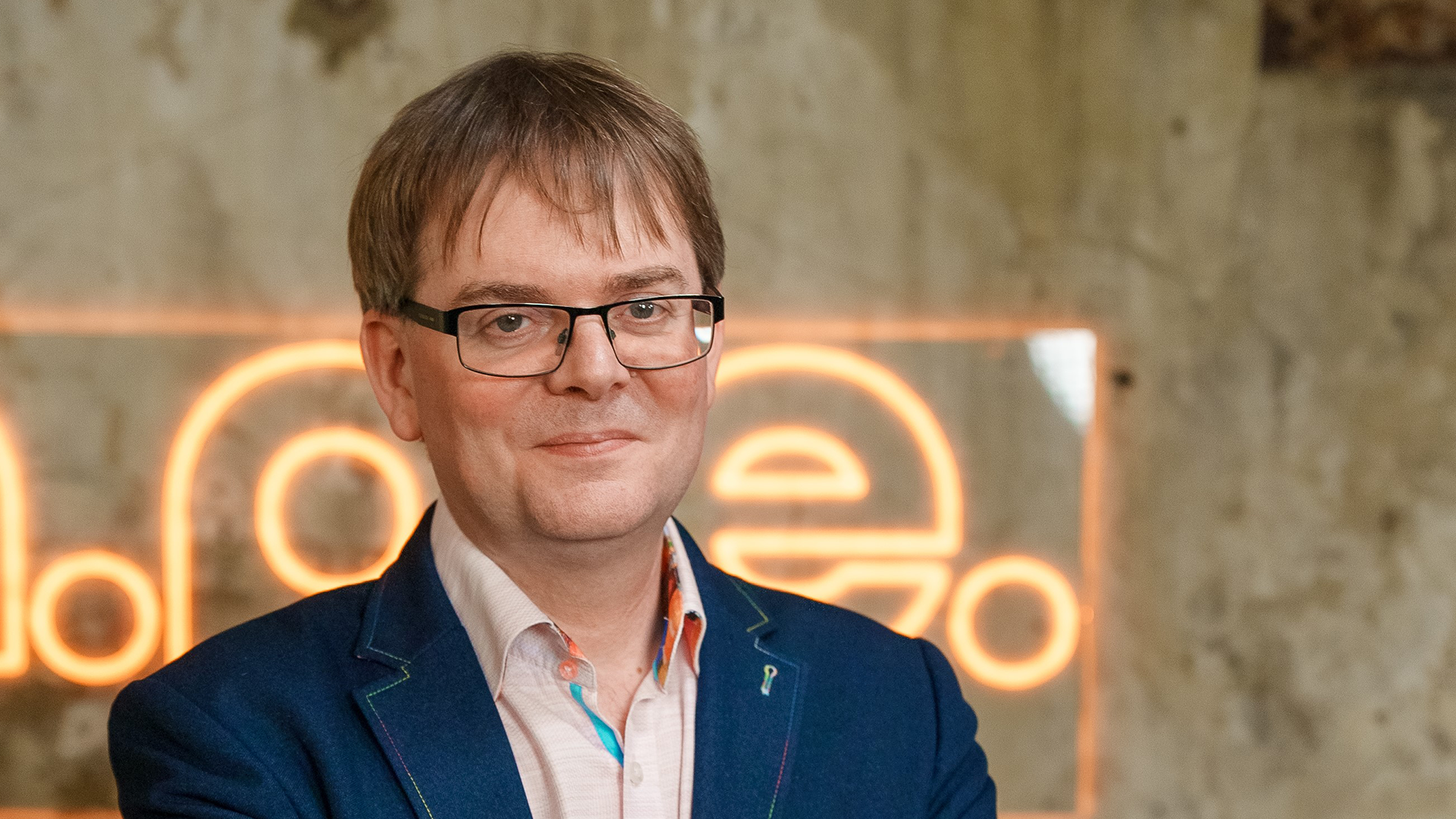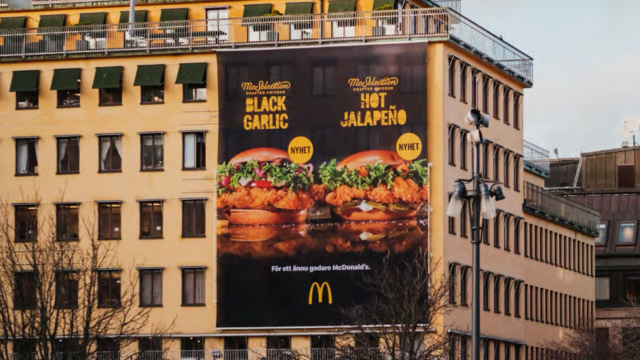
Orlando Wood – en av världens ledande experter på creative effectiveness – kommer till Stockholm och DCC Creative Summit!
Förra året deltog Orlando via länk och vi är nu oerhört stolta över att Orlando kommer hit personligen. Tillsammans med vår marknadschef Jesper Albansson kommer han att prata om behovet av en ny kreativ revolution, hur konst och show alltid varit centralt för reklam, vinst och tillväxt samt hur utomhus kan vara en scen för det.
Inför att de sammanstrålar på Creative Summit har de haft ett samtal som du kan läsa nedan.
Orlando, we’re delighted you’re coming out to speak at the Creative Summit in Stockholm in October. What will you be talking about?
The need for a new creative revolution, and how art and the show have always been central to advertising, to profit and growth.
And I’m talking about it because the industry has fallen hostage to ‘Salesmanship’ advertising. We find ourselves in a Salesmanship rut. This golden age for advertising technology, with its ability to target people ever more narrowly, has led to brands moving into Salesmanship mode, and forgetting the importance of ‘Showmanship’. The result is that advertising effectiveness has fallen, and growth remains anaemic.
This can happen when a new advertising medium emerges. You can sometimes see a wholesale move towards the school of advertising it excels in. And the new media that have emerged over the last 20 years excel in Salesmanship, because their principal advantage has been that they enable advertisers to target more narrowly.
Salesmanship has always been more associated with the direct targeting of half-interested prospects to nudge the sale. The main role of Showmanship, on the other hand, is much broader; it is to capture attention, to create awareness and preference, and lodge the brand in memory through emotion. Do this first and your Salesmanship becomes a great deal easier – and more effective.
Salesmanship advertising tends to be inherently uninteresting to those who aren’t in the buying window or to those who haven’t already been warmed up to the brand. And when you think that nearly a billion internet users worldwide are now blocking advertising, that should tell you something about what’s happened to the advertising product.
Both Salesmanship and Showmanship schools of advertising are important, and each supports the other, but we’ve forgotten that Showmanship is the master and Salesmanship is the servant. And thanks to years of enquiry, we now have a wealth of evidence to demonstrate Showmanship’s importance.
So, advertisers need to find a way back to it – advertising that respects the audience’s intelligence, that finds the magic in the product, advertising with wit and charm. These are lessons that were learned in the 1960s Creative Revolution, but have since been forgotten in an age of short-term objective setting and measurement.
It’s interesting to hear you say that Showmanship has always been central to advertising – can you elaborate?
Well, just look back at the history of the advertising poster. The poster is where modern mass-reach advertising and Showmanship all began – in the cabarets and music halls of Montmartre in the 1890s. Advances in lithography meant that it was now possible to do big print-runs of an advertising poster – in colour – for the first time. Artists quickly took to the medium and to the advertising poster because it allowed them to draw freely and directly onto the printer’s lithographic stone plate, and because the poster allowed artists greater freedom than the salons and the galleries of the time. So, artists – who frequented the shows and cabarets of Montmartre – were soon commissioned to create the posters both for these venues and for the performers who sang and played in them. They and their subjects – stars of the day like Jane Avril, Aristide Bruant, Sarah Bernhardt – quickly became famous. In some ways, they and their subjects were the influencers of the day, and the advertising poster was its TikTok.
Soon, manufacturers were asking the same artists to create posters for them. These posters had to be arresting; they had to stop the passer-by in the street, using a novel image that could register the brand through emotion in memory. Showmanship began here.
Then, just 15-20 years later, in America, the self-styled men of ‘science’, Albert Lasker, John E. Kennedy and Claude Hopkins, would start talking about a more serious kind of advertising. Print advertising with cut-out coupons enabled them to run experiments to understand the effect of different versions of the copy on direct response. Examining the coupon returns for two slightly different versions of an ad promoted a more direct style of advertising; one that sought only those who were already half-interested in the product and gave them a reason why they should buy. And so, Salesmanship – or ‘Salesmanship in print’ as my friend and fellow author, Paul Feldwick, describes it – was born.
Fast forward 100 years and this is where we find ourselves again today. But, while both schools are important, and each supports the other, it is Showmanship that is the more important. Art and the show aren’t just advertising frills, they are central to profit and growth.
And understanding these two schools of advertising and how they work is critical – for briefing, for creative judgement and for selling your work in.
Are there any principles that marketers can adopt to make better Showmanship advertising?
Yes, absolutely. Advertising markedly started to drift away from Showmanship around 20 years ago. It became flatter, more functional, direct – more ‘left-brained’. And by that, I mean geared towards a narrower kind of attention that’s closer up, more literal.
Showmanship plays a different role. It must capture the broad-beam attention of the right hemisphere and lodge the brand in memory. In my books and course, advertising principles explained (a.p.e.), I look at the remarkable work conducted by Iain McGilchrist on attention. Study his thesis and it seems to me an inescapable truth that these two types of attention (broad and narrow) underpin the two schools of advertising (Showmanship and Salesmanship).
The right hemisphere of the brain is more holistic, alert to novelty, to people, to place, to the passage of time, to narrative, to metaphor, to humour, to music. And when advertising appeals to the right hemisphere in this way, we do indeed see a greater ability to capture attention, to create stronger emotional responses and to establish growth. Without these things, we risk creating communication that is cold, repetitive and didactic. It might work to nudge the sale, but it will do little else. When advertising has no emotional vitality, it won’t be remembered. It stops working. So, these are not merely aesthetic decisions; they are long-term strategic and commercial choices.
Ultimately, advertising must create fame. Fame is what builds brands — it’s what gets them noticed, remembered and bought. And to build fame, advertising must entertain. It must surprise and delight. It must capture the public’s imagination. You look at the great campaigns and you’ll see there’s a self-awareness, a warmth, a humanity to them. They’re distinctive, often funny, have a musicality about them, and they embed themselves in culture.
So, make people feel something. Be distinctive. Respect and reward the audience’s intelligence; and aim to entertain. It’s not just what you say, but how you say it, as Bernbach put it. That’s how we attract the right kind of attention and build brands that last.
What does the future of showmanship look like? And how can modern media act as a stage for our show?
I suspect we are going to see companies using AI to usher prospects through entire customer journeys towards a sale – a kind of Salesmanship on steroids. And when it becomes easier to activate, you need to spend more on brand building. That means Showmanship becomes more important not less.
Showmanship demands a floodlit stadium – one that commands both reach and depth of attention. It is partly the move to low-attention media that has set advertising effectiveness back. The traditional channels, of course – TV, cinema, radio – are good. The question becomes, what are the new stages for Showmanship? OOH is also very good for reach and new research from Lumen and Ocean shows how 3D anamorphic displays are, in fact, better at commanding attention than advertising on social media. A Showmanship principle I focus on in a.p.e. is ‘Moto e Azione’ – how you bring about an emotional transformation in your audience through movement in the face, eyes, hands and body – and 3D anamorphic displays lend themselves perfectly to this. Games and connected packaging may also offer opportunities.
It takes time for creatives to experiment and understand how new tools and media work. But I think we are starting to see a new outlook emerging on the best way to use social media, partly driven by TikTok, which has a much greater emphasis on entertainment. Recent research conducted by System1 with TikTok shows that the two schools of advertising (and their respective effects) play out on TikTok too – and that even creator content behaves in a similar way. A new kind of show that we’re going to see a great deal more of in the coming years.
How can marketers learn more about all of this?
Well, they can start by coming to our session at the Creative Summit on the 16th of October in Stockholm, where I will be talking about this and describing some helpful principles for Showmanship. I have already mentioned my course, a.p.e., and there are three new reports out from System1 (The Creative Dividend, The Long and the Short (Form) of It & Compound Creativity) plus a film I’ve made with Peter Field (Measuring the Magic), which they might find very helpful if they are trying to make the case for Showmanship in their company. Please scan the QR-code below for access to these reports.
Thank you very much, Orlando.
My pleasure.
https://advertisingprinciplesexplained.com/



